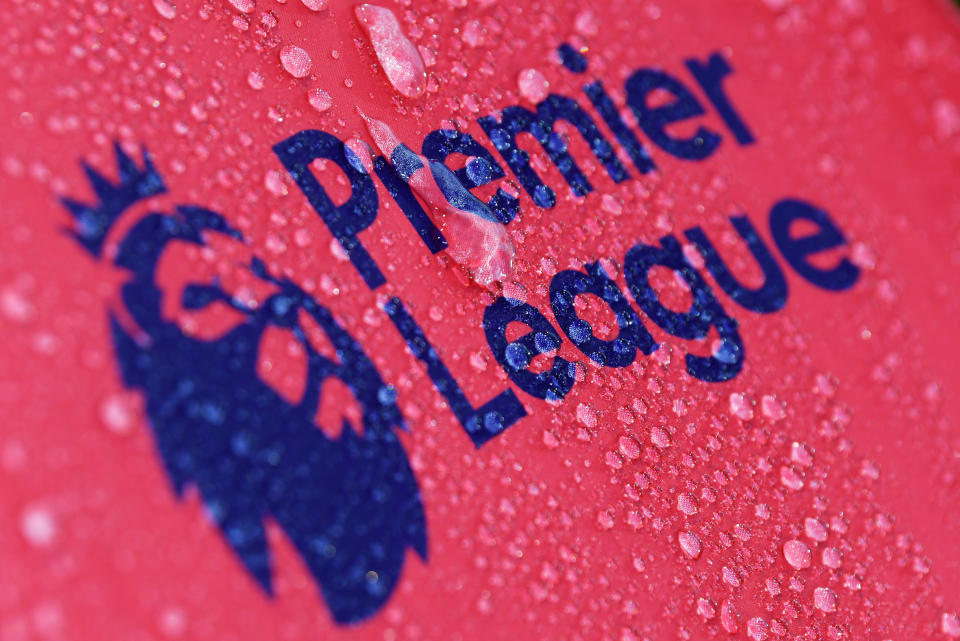Are soccer's financial boom times coming to an end?
If you’ve studied any economics at all, you could accept as a reasonable argument that soccer’s skyrocketing broadcast rights fees have inflated a market bubble. The cost of acquiring the rights to air soccer games has risen far out of proportion to inflation — often multiplying from one contract to the next — yet the actual value for the product itself has not risen nearly as fast.
Certainly, scarcity plays a part. But there is no real justification for these outlays, especially when, in England, home of the almighty Premier League, TV ratings are actually going down — by a staggering 14 percent on the dominant Sky carrier last season.
The TV money has paid for everything. New stadiums. Expensive innovations like data and performance science. And, most of all, the hyperinflation on transfer fees and salaries in the global player market. Look at the breakdown of Premier League teams’ earnings two seasons ago, and you’ll note that almost every team took in more money from broadcasting than any other source of revenue.
So there was cause for alarm when, last week, news emerged that the Premier League — and its 20 clubs, who are paid out a fixed share and another cut depending on their final standings in the league — would be earning less money per game on its new domestic contracts than it had on the last ones.
Sky and BT will be paying the Premier League about $6.25 billion for the 2019-2020, 2020-2021 and 2021-2022 seasons, gobbling up the five biggest of the seven rights packages, leaving only crumbs for others. Yet Sky’s outlay, which makes up the bulk of the money, is $5 billion, less than the $5.7 billion it paid for the last round of rights, covering last season, the current one and the next. In fact, it will get two more games for its money per year than it did the last time around — 128, instead of 126.
Sky’s cost per game, then, is down 16 percent.

There are several factors at play here. One is the lagging competition to traditional broadcasters from streaming services, who threatened to but have yet to get involved. Another is that both broadcasters probably overpaid the last time around in a bidding war for live sporting rights dominance over Great Britain, driving the price up 70 percent over the prior deal. And there’s the fact that since that deal, Sky and BT began offering the other’s exclusive channels, essentially ending their zero-sum competition and reducing the importance of soccer supremacy.
But it is striking all the same that in a single round of bidding, the Premier League’s most valuable package by far lost about a sixth of its value. Both Sky and BT announced that they had been “disciplined” in their bidding.
Should that make other leagues nervous?
Well, not just yet.
The Italian Serie A just cleaned up on its new foreign rights deals, almost doubling their last agreement from $234 million per year to $457 million per year — which is still less than a third what the Premier League gets on its foreign deals, which are also still increasing.
Serie A have just sold their international TV rights for nearly double what the last evaluation was
Could mean great news for us abroad pic.twitter.com/e07F61qz2B
— ItalianFootballTV (@IFTVofficial) October 11, 2017
Serie A’s domestic rights went up slightly, from $1.16 billion per season to $1.29 billion. But that’s after the last broadcasters, Sky Italy and Mediaset, had actually submitted a bid of $1.02 billion per season, down about 14 percent. In other words, in Italy, too, the incumbent rights-holders valued the league lower for the next three seasons than for the last three. It’s just that a Spanish broadcaster, Mediapro, came along and essentially bailed the league out, meetings its “minimum demand” by a thousand euros.
Over in Germany, meanwhile, the Bundesliga’s domestic broadcast rights deal exploded by 85 percent in the last round, which began with the ongoing season. The league’s four-year pact with Sky Germany and minority partners is good for $5.72 billion. There is also significant room for growth in the league’s foreign rights, which lag all the other of Europe’s Big Four leagues.
In Spain, the last of that foursome, where internet giants Facebook and Amazon are expected to get involved, La Liga says it expects to sign $2.83 billion in contracts in its next round of bidding, beginning with the 2019-20 season. That would mean an $863 million uptick, with about $1.6 billion of that expected to come from domestic rights and the rest from abroad.
[ Follow FC Yahoo on Facebook and Twitter ]
Growth in the domestic TV rights fees of the other major European soccer circuits, in other words, falls somewhere between respectable and strong. Yet the Premier League is the market leader. And industries tend to follow the trends set by their dominant companies. If the Premier League is in some kind of decline, that could spill over to the other leagues once they get through the years that they lag behind.
The Premier League, for its part, has argued that the rise of its foreign values — Chinese rights could be up 10-fold, it’s been speculated — will more than make up for the gap. And there is a certain amount of value in the retention of existing broadcasters, even at a lower fee, when you consider that three major rights-holders lost their shirts on EPL deals and went out of business or off the air in England.
Yet even if the Premier League rights aren’t going down on the whole, with the foreign markets compensating for the domestic one, the fact that the core package is decreasing in value is concerning. At one time, the foreign markets will also be mature and maxed out, at which point the league’s staggering growth could stagnate or even reverse.
The EPL is hardly in trouble. And neither are any of the major leagues in Europe. But after decades of dramatic expansion, funded from a seemingly bottomless pit of TV money, a ceiling may have been discovered in Europe’s soccer market.
Leander Schaerlaeckens is a Yahoo Sports soccer columnist and a sports communication lecturer at Marist College. Follow him on Twitter @LeanderAlphabet.



